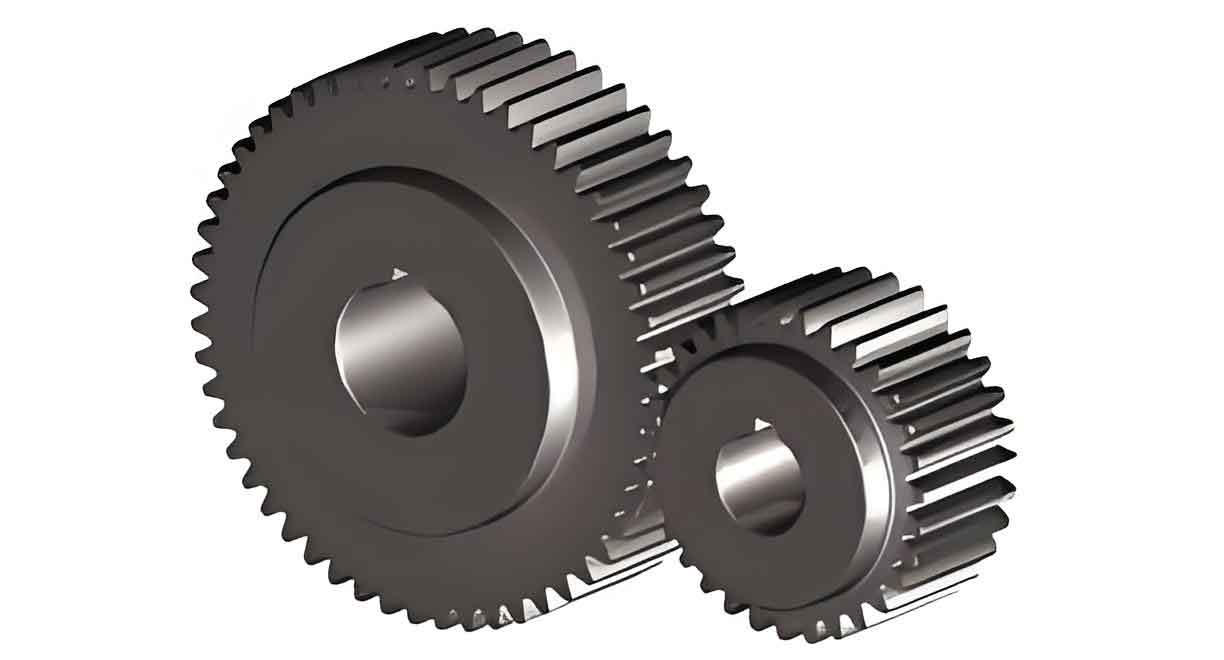Abstract
Spur gears, as crucial transmission components, are widely used in automobiles and various machinery equipment. Traditional manufacturing methods such as hobbing and shaping often disrupt the metal flow lines in the tooth area, reducing the gears’ strength and lifespan. To address these issues, this paper develops a one-step extrusion moulding process for spur gears. The feasibility of this process is explored through finite element simulation and experimental verification. Furthermore, the die structure, process parameters, and die material are optimized to minimize wear during the extrusion process.
Keywords: spur gear; extrusion moulding; die; cermet

1. Introduction
Table 1: Research Background and Significance
| Aspect | Description |
|---|---|
| Research Background | Traditional manufacturing methods for spur gears disrupt metal flow lines, reducing gear strength and lifespan. |
| Research Significance | Development of a one-step extrusion moulding process to improve gear quality and production efficiency. |
2. Design and Simulation of One-Step Extrusion Moulding Process for Spur Gears
Table 2: Key Steps in the Extrusion Moulding Process Design
| Step | Description |
|---|---|
| Die Design | Design of upper and lower dies for the extrusion process. |
| Material Selection | Selection of billet material (e.g., 20CrMnTiH) and die material (e.g., H13 steel). |
| Finite Element Simulation | Simulation of the extrusion process using DEFORM-3D software. |
Table 3: Simulation Results
| Parameter | Description |
|---|---|
| Radial Displacement | Uniform radial displacement in the tooth tip area, indicating complete filling. |
| Equivalent Strain | Small differences in equivalent strain accumulation at corresponding points in different gear areas, indicating uniform plastic deformation and high forming quality. |
3. Experimental Verification of the Extrusion Moulding Process
Table 4: Experimental Conditions and Methods
| Condition/Method | Description |
|---|---|
| Experiment Type | Gear extrusion moulding experiment. |
| Corrosion Experiment | To observe metal flow lines at the tooth profile. |
| Comparison | Comparison between experimental and simulation results. |
4. Optimization of Die Wear
Table 5: Approaches to Optimize Die Wear
| Approach | Description |
|---|---|
| Die Structure Optimization | Optimization of the upper die’s chamfered corner length. |
| Process Parameter Optimization | Adjustment of process parameters to reduce wear. |
| Die Material Optimization | Use of cermet composites to enhance die lifespan. |
Table 6: Wear Analysis Results
| Parameter | Value |
|---|---|
| Optimal Chamfer Length | 6 mm |
| Estimated Die Lifespan | Approximately 11,000 gears before wear failure. |
5. Preparation of the Lower Die Using Powder Sintering
Table 7: Powder Sintering Process Steps
| Step | Description |
|---|---|
| Die Design | Design of the inverse die structure for powder sintering. |
| Material Preparation | Preparation of (Ti,W)C-based cermet material with different Al2O3 particle sizes and contents. |
| Sintering Process | Use of spark plasma sintering to prepare the die. |
Table 8: Dimensional Accuracy of the Sintered Die
| Measurement Point | Maximum Deviation | Minimum Deviation | Average Deviation |
|---|---|---|---|
| Tooth Tip | 0.81% | 0.11% | 0.47% |
| Left Tooth Flank | 0.76% | 0.14% | 0.50% |
| Right Tooth Flank | 0.83% | 0.12% | 0.44% |
6. Conclusion and Future Work
Table 9: Main Conclusions
| Conclusion | Description |
|---|---|
| Process Feasibility | The one-step extrusion moulding process for spur gears is feasible and advantageous. |
| Metal Flow Lines | The metal flow lines in the gears prepared by this process are uniform, consistent, and continuous. |
| Die Wear Optimization | Optimization of die structure, process parameters, and material reduces wear. |
| Die Preparation | The inverse die preparation process using powder sintering is feasible. |
Table 10: Future Work
| Task | Description |
|---|---|
| Experimental Verification | Further experiments to validate the optimized die structure and process parameters. |
| Comparative Experiments | Compare gears produced using the cermet die with those produced using traditional die steel. |
Successfully designs and verifies a one-step extrusion moulding process for spur gears, demonstrating its feasibility and advantages. Optimizations in die structure, process parameters, and material are proposed to minimize die wear. The inverse die preparation process using powder sintering is also validated. This research provides a reliable basis for further investigation into the precision forming of spur gears. However, due to time and experimental constraints, further work is needed to fully validate the optimized parameters and materials.
